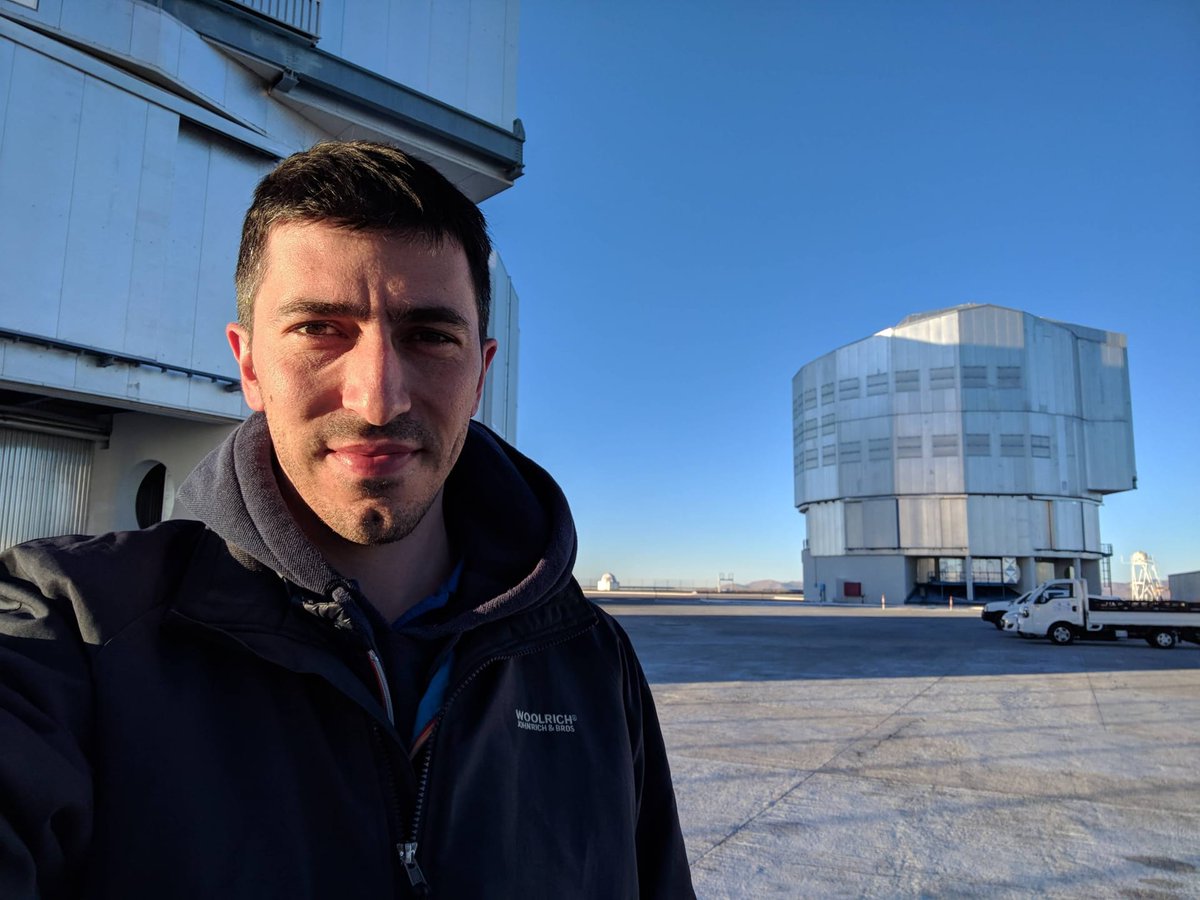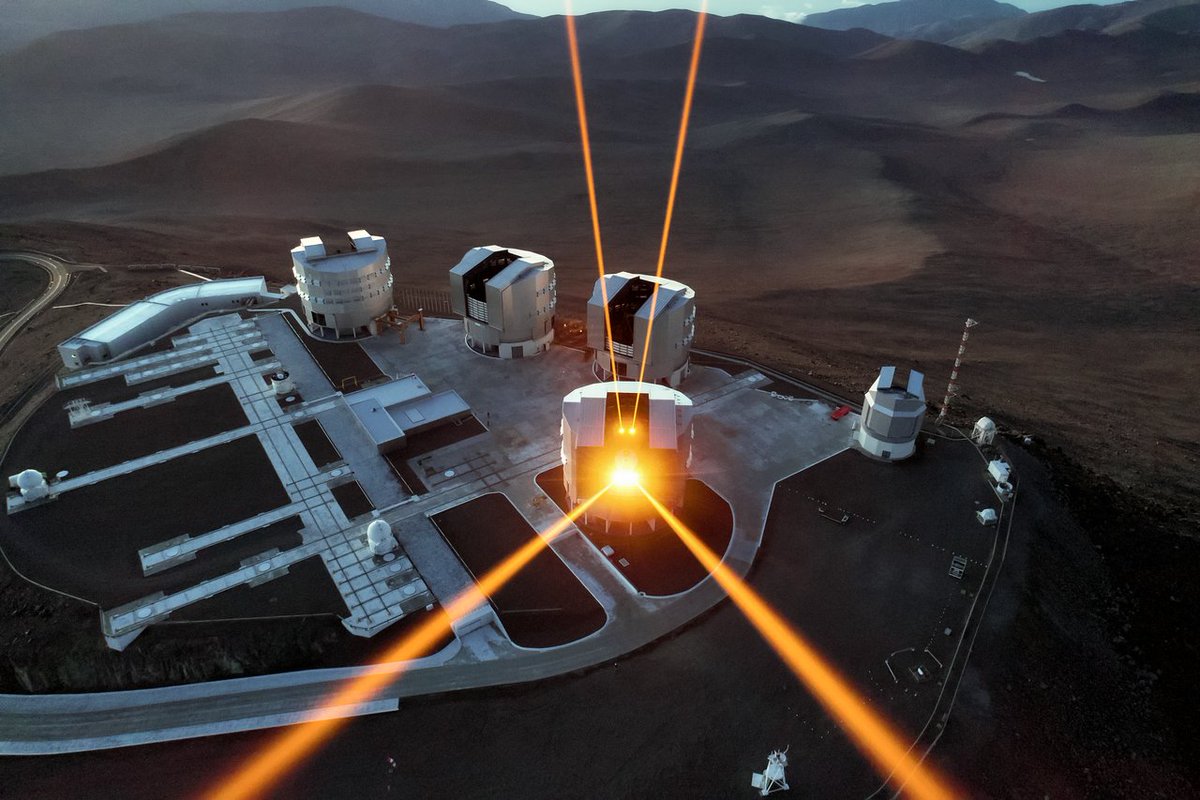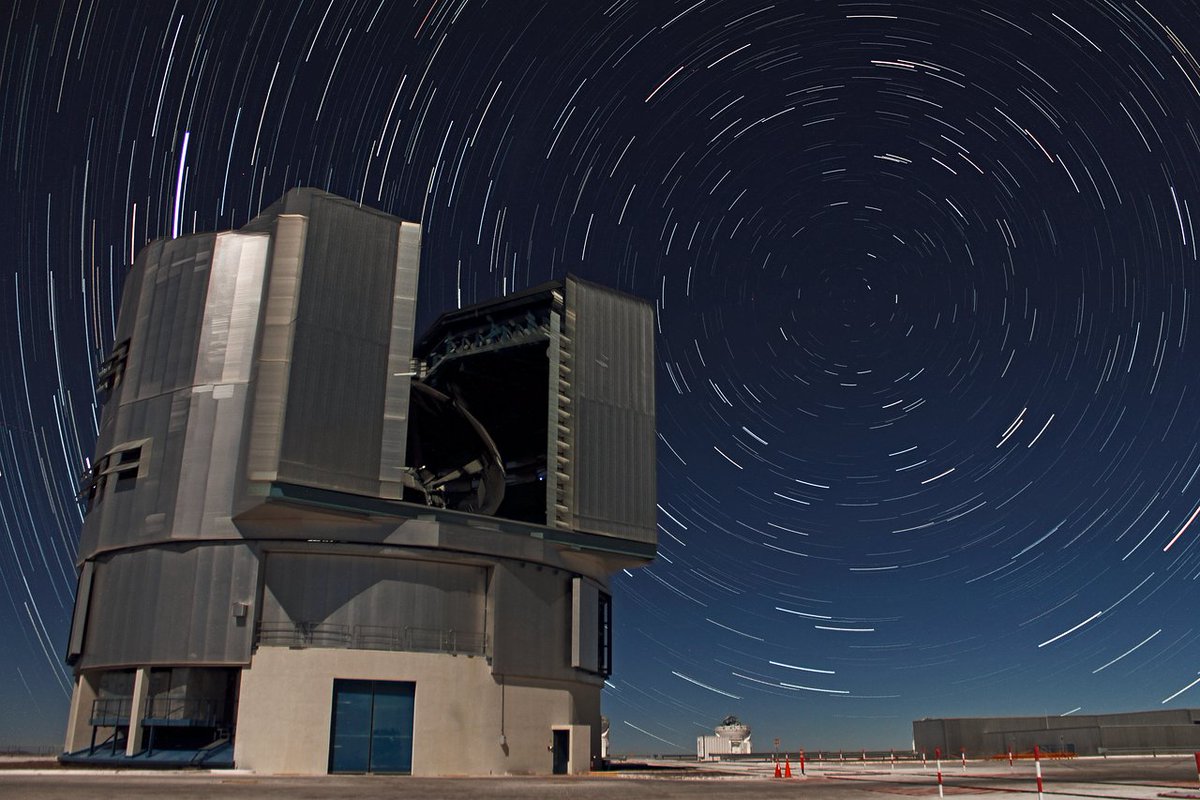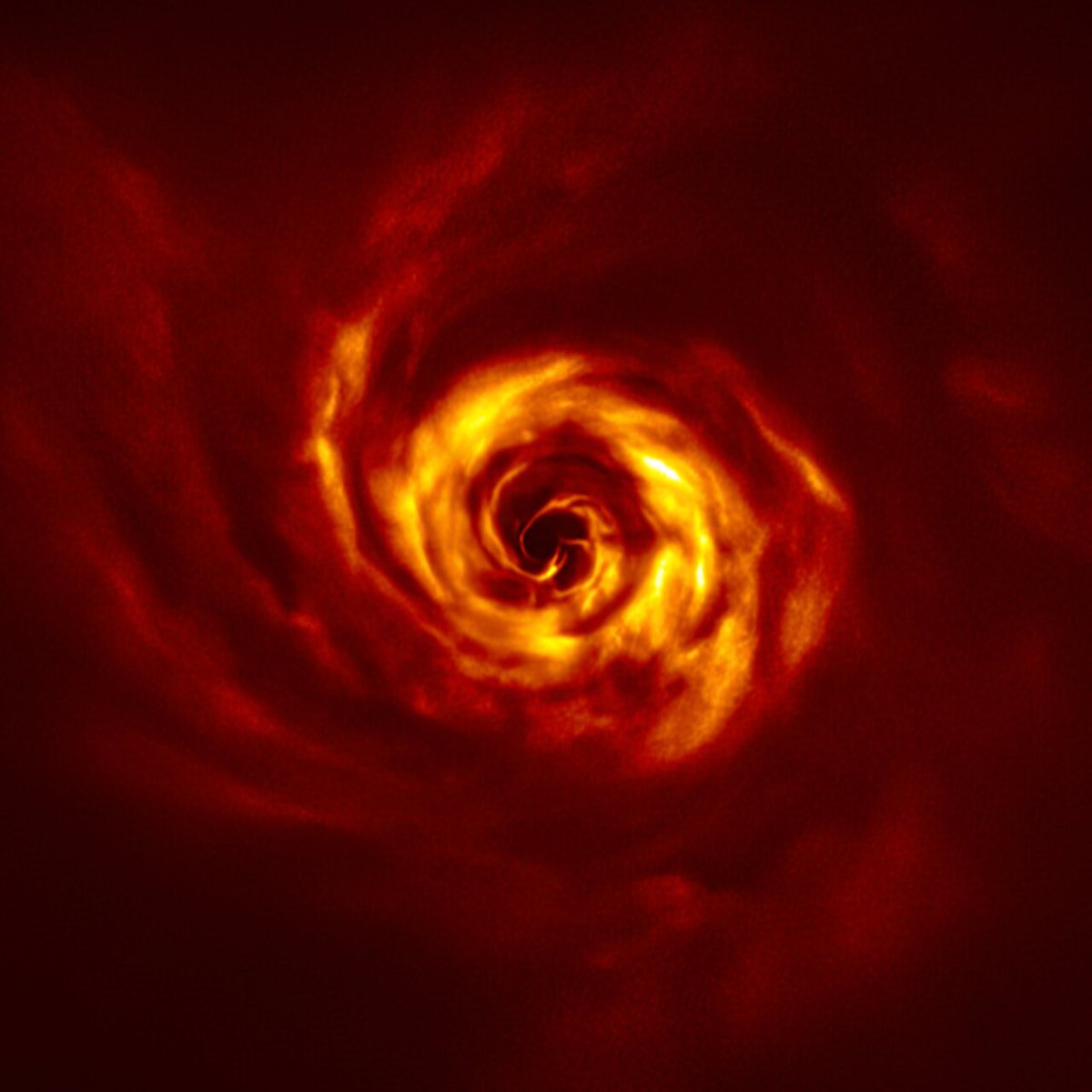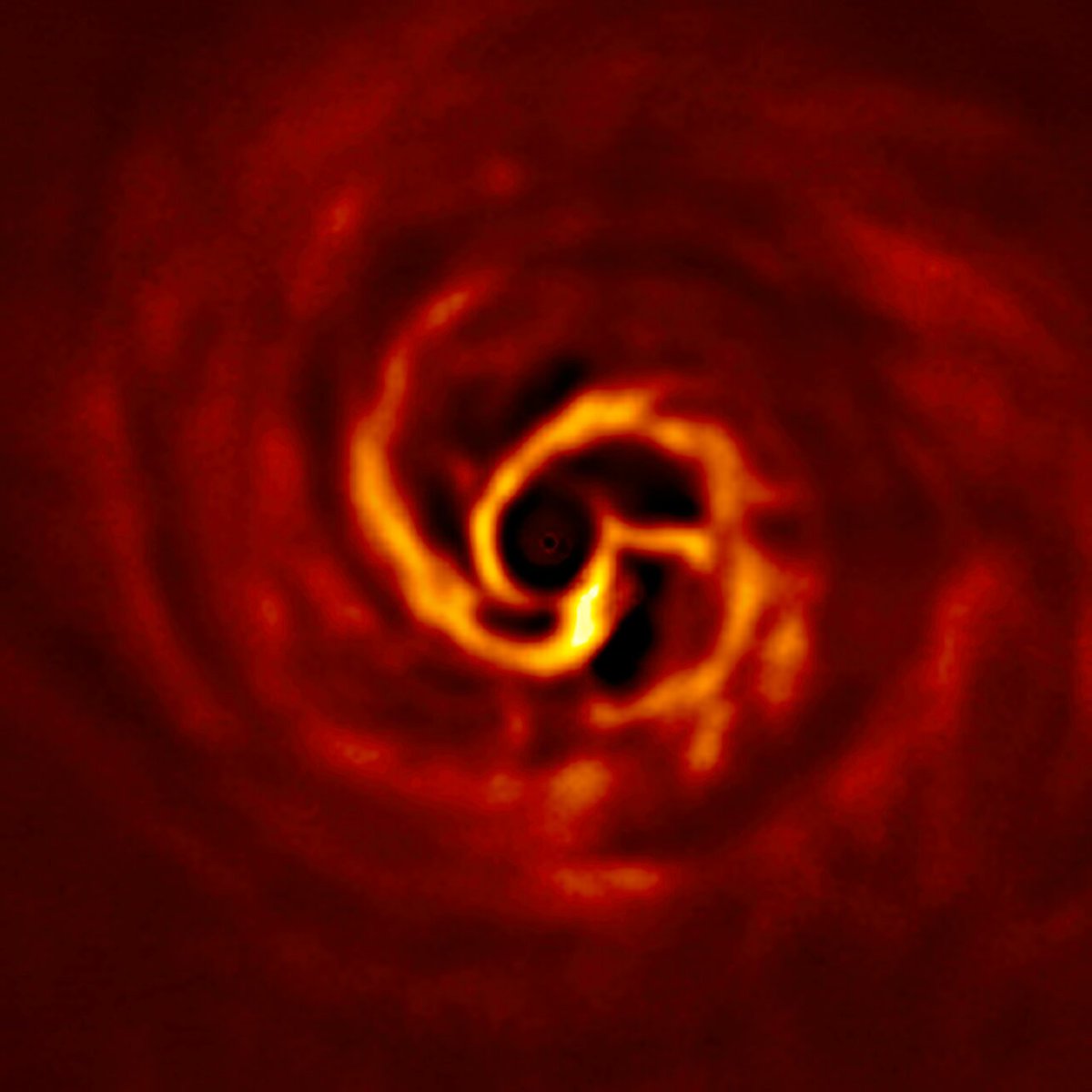
📢 Breaking news: Meet the Black Hole at the Centre of our Galaxy! Astronomers have unveiled the 1st image of the supermassive black hole at the centre of the Milky Way. The image was produced by a global research team @ehtelescope 📷EHT Collaboration 
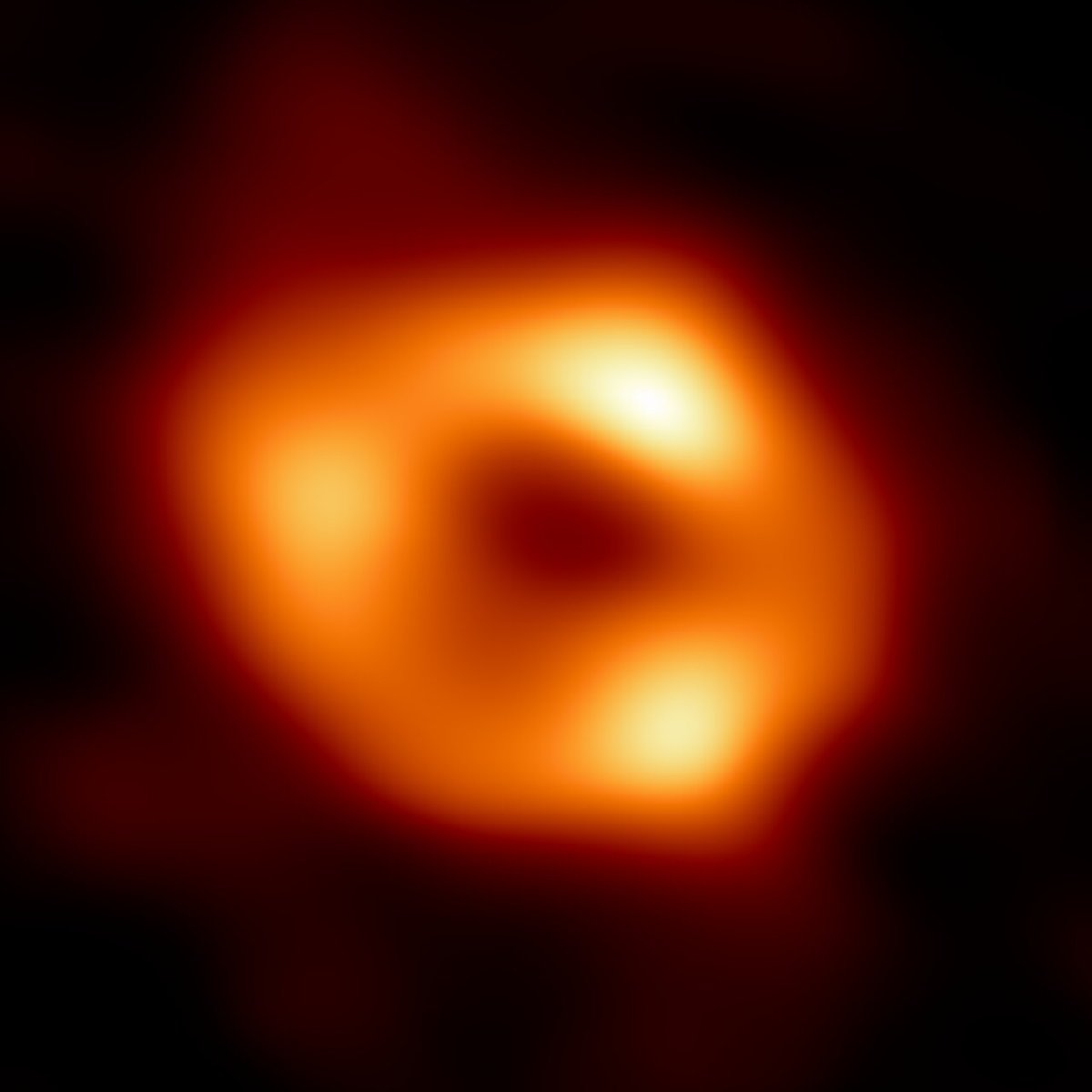
“It is very exciting for ESO to have been playing such an important role in unravelling the mysteries of black holes, and of Sgr A* in particular, over so many years,” commented ESO Director General @xbarcons 👇
“ESO not only contributed to the EHT observations through the ALMA and APEX facilities but also enabled, with its other observatories in Chile, some of the previous breakthrough observations of the Galactic centre.”
Thread below 👇 with the summary of the results. Read the full press release 👉 eso.org/public/eht-pr. Watch this video 👇 for a quick (science) bite of this (doughnut) black hole. Whatever you prefer we've got you covered
🔵 Scientists had previously seen stars orbiting around something invisible, compact & very massive at the centre of the #MilkyWay. This suggested that this object is a black hole & today’s image provides the first direct visual evidence of it. Say hello to #OurBlackHole👋
🔵 What do we actually see in the image? We cannot see the black hole itself 🕳️ because it is completely dark, but we can see a dark central region called a shadow, surrounded by glowing gas ⭕️
🔵 Because the black hole is about 27 000 light-years away from Earth, it appears to us to have about the same size in the sky as a doughnut on the Moon. Squint to see the 🍩 in this video 🎥 ESO/M. Kornmesser/L. Calçada
🔵 To image it, the team created the powerful @ehtelescope which linked together 8 existing radio observatories across the planet to form a single “Earth-sized” virtual telescope 📷 ESO/L. Calçada
🔵 In this video you can see all European facilities involved in the EHT Collaboration: eso.org/public/videos/…
🔵 Among these, the EHT network of radio observatories includes @almaobs & @ApexTelescope in Chile, co-owned and co-operated by ESO on behalf of its member states in Europe.
📷 ESO/José Francisco Salgado (josefrancisco.org), EHT Collaboration
📷 C. Duran/ESO

📷 ESO/José Francisco Salgado (josefrancisco.org), EHT Collaboration
📷 C. Duran/ESO


🔵 The EHT observed Sgr A* on multiple nights in 2017, collecting data for many hours in a row, similar to using a long exposure time on a camera.
🔵 We now have two images of black holes! Today's EHT achievement follows the collaboration’s 2019 release of the first image of a black hole, called M87*, at the centre of the more distant Messier 87 galaxy.
📷 EHT Collaboration
📷 EHT Collaboration

🔵 The two black holes look remarkably similar, even though our galaxy’s black hole is more than a thousand times smaller and less massive than M87*
📷 EHT collaboration (acknowledgment: Lia Medeiros, xkcd)
📷 EHT collaboration (acknowledgment: Lia Medeiros, xkcd)

🔵 This animation demonstrates their massive differences in size by showing what the M87 black hole would look like if it were closer to Earth. 🎥 ESO/M. Kornmesser, EHT Collaboration
"We have two completely different types of galaxies and two very different black hole masses, but close to the edge of these black holes they look amazingly similar,” says Sera Markoff, Co-Chair of EHT Science Council & professor of theoretical astrophysics @UvA_Amsterdam
"This tells us that General Relativity governs these objects up close, and any differences we see further away must be due to differences in the material that surrounds the black holes.”
🔵 Obtaining an image of #OurBlackHole was considerably more difficult than for M87*, even though Sgr A* is much closer to us. Let's see why 👇
🔵 The gas in the vicinity of both black holes Sgr A* and M87* moves at the same speed, nearly as fast as light.
🔵 But gas takes days to weeks to orbit the larger M87*, whereas in the case of the much smaller Sgr A* the gas completes an orbit in mere minutes.
🔵 But gas takes days to weeks to orbit the larger M87*, whereas in the case of the much smaller Sgr A* the gas completes an orbit in mere minutes.
🔵 This means the brightness and pattern of the gas around Sgr A* were changing rapidly as the EHT Collaboration was observing it. It was a bit like trying to take a clear picture of a puppy quickly chasing its tail.
🔵 The researchers had to develop sophisticated new tools that accounted for the gas movement around Sgr A*. The effort was made possible through the ingenuity of >300 researchers from 80 institutes around the world that together make up the EHT Collaboration.
🔵 The team worked rigorously for 5 years, using supercomputers to combine and analyse their data, all while compiling an unprecedented library of simulated black holes to compare with the observations.
🔵 The image of the Sgr A* black hole is an average of the different images the team extracted, finally revealing the giant lurking at the centre of our galaxy for the first time. 

🔵 Scientists are particularly excited to finally have images of two black holes of very different sizes, which offers the opportunity to understand how they compare and contrast.
📢 Stay tuned after our press conference to see Win & Régine from @arcadefire perform their new song End of the Empire IV (Sagittarius A*) from their album, WE. 🔗
📢 Join our live YouTube Q&A session with EHT experts, at the same link from 16:30 CEST You can ask questions using #askEHTeu
• • •
Missing some Tweet in this thread? You can try to
force a refresh





